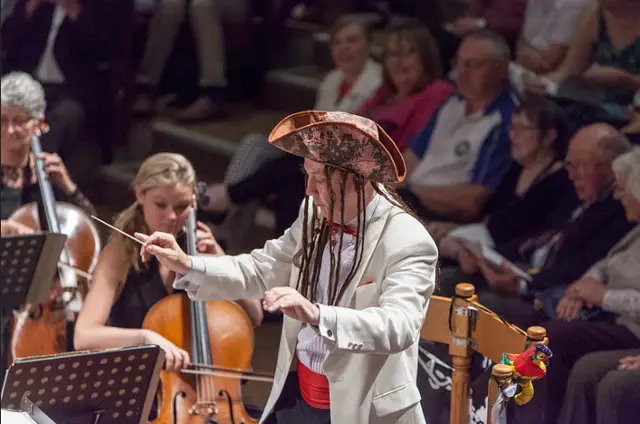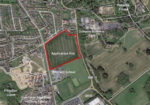Jonathan Dodd shares his review of the latest Isle of Wight Symphony Orchestra (IWSO) concert. Images with kind permission of Allan Marsh. Ed
Last Saturday, on 1st July, the Isle of Wight Symphony Orchestra gave its last concert of this season. As concerts go, it was very good. As end-of-season concerts go, it was terrific. As sheer enjoyment and entertainment go, it was outstanding.
I’ve been to some concerts that were OK, and a lot I’ve really enjoyed, but I can honestly say that last Saturday was my favourite ever. I admit that I’m biased. The IWSO is my local orchestra, I’ve come to know some of the players, and I’m always surprised at the quality of their playing, their enthusiasm, and their willingness to play pieces that are difficult or even obscure.
This season finale was called “Carnival at Sea”, and included a wide variety of pieces, all linked by a nautical theme. There was something for everyone. It started with Dvorak’s “Carnival overture”.
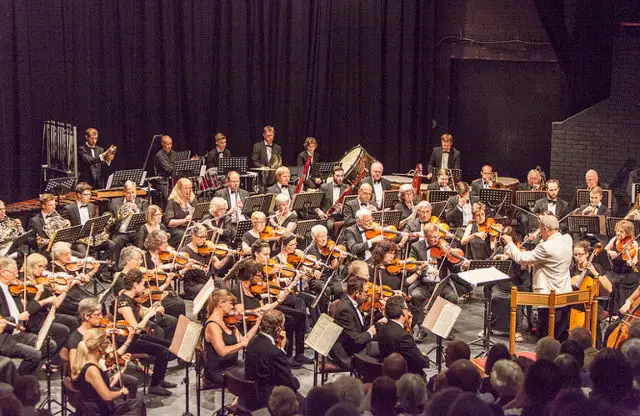
It’s a familiar piece, full of the sights and sounds of a carnival, with all the instruments adding their voices as if they’re part of an excited crowd enjoying the atmosphere and excitement of a circus or carnival. It’s a light-hearted, happy piece, full of energy and bright tunes, that lifts the heart in the anticipation of enjoyment ahead. A perfect way to start the evening.
“The Onedin Line” music
The next piece is one of those perennial tunes that everybody recognises, although probably from the renowned television series “The Onedin Line”, and perhaps not many people would know it was written by Khachaturian.
The interesting thing to me is that it’s a love theme from a ballet about Spartacus, who led a slave revolt against the Roman Empire, and was entirely land-based. And yet it has become forever associated with sailing ships at sea, and works perfectly in that setting.
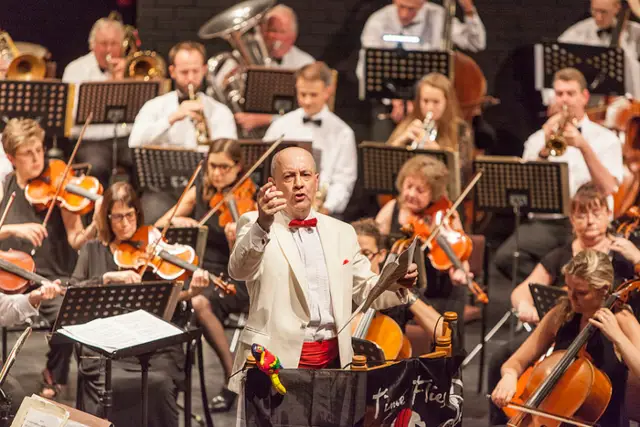
The sweeping strings and cross-currents of tune and rhythm from all sides of the orchestra give a lovely impression of the ship roaring along under full sail, with the wind singing in the rigging, varied by occasional lulls and squalls as different instruments have their moments.
It was played with great delicacy and expression, and I know several people who were looking forward to hearing this, so it was good to hear them saying afterwards how much they enjoyed it. I did too.
Debussy in Eastbourne
The next piece, “La Mer”, by Debussy, was introduced by the conductor Jonathan Butcher, with a story about Debussy staying at the Grand Hotel in Eastbourne, and being inspired by the magnificent view by the sea. Apparently he returned a few years later to the same hotel to write the second version, but all he could see was Tesco’s car park, and thus a great work was lost. The first visit really did take place, but I think the other was made up.
This was in complete contrast to the first two pieces. Debussy wrote complex, very difficult music. He has been compared to the Impressionist painters of France in the same period, and the music seems filled with fragments, like the dabs of colour on a Van Gogh painting, although Debussy himself was more inspired by JMW Turner. The three movements gave his impressions of the sunlight on the sea in the morning, then the movement of the waves, and then the wind and the water.
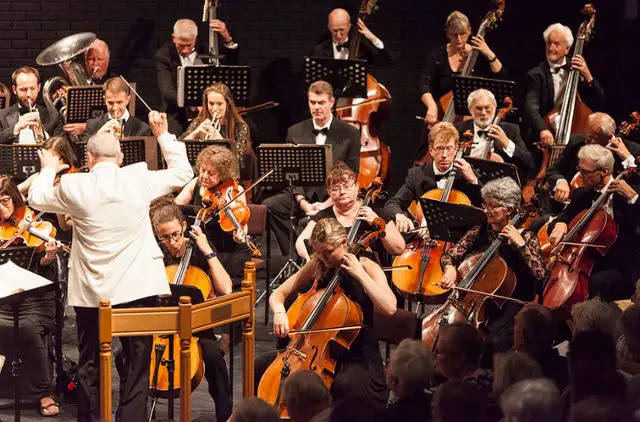
This was challenging music indeed, difficult to play – you could see the concentration on the musicians’ faces – difficult to understand or follow, and difficult to remember. I allowed myself not to try to understand, but just to watch and listen and let it wash over me, rather like floating in the sea itself. I came away with impressions and snatches of light and darkness, and an overall sensation of warmth, and the peace that watching the sea imparts. Lovely, although I couldn’t hum any of it.
Dame Ethel Smyth, “Lady Composer”
After the interval, we were treated to the Overture from “The Wreckers”, an opera by Dame Ethel Smyth, who deserves to be better-known. She was an indomitable and somewhat irascible pioneer of the nineteenth century. She became a “lady composer”, much against the grain, and was not at the time properly recognised by male colleagues and critics. She wrote several operas. This one was set in Cornwall, about wreckers luring ships onto the rocks, and making off with the cargo.
The music was evocative of the wild and isolated south-east and the danger of the tides and seas, as well as the danger of the work, and the excitement and risk-taking, and the relief afterwards, and relaxing with dance and drink, and enough to eat. The themes were all introduced as they should be in an overture, in a lively and energetic manner. I wanted to find out what would have followed in the opera itself.
Jonathan Butcher, Conductor and Tenor
This was followed by a piece by Percy Grainger called “Molly on the Shore”. It was based on two Irish folk songs, Molly and “Temple Hill”. It was obvious from the start that this was Irish dance music, and it had an infectious rhythm and recurring tunes that made my toes tap and my head nod, and I found myself wishing I was standing up in a space rather than being confined in my chair. The orchestra obviously enjoyed this as well, because I could see them all smiling as they played. It was infectiously lively.
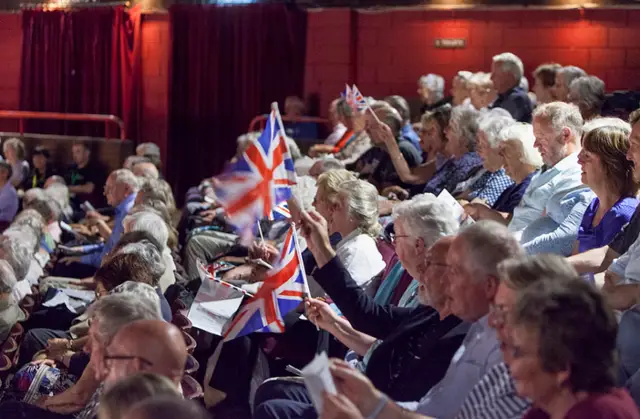
The penultimate piece was Henry Wood’s “Fantasia on British Sea Songs” a favourite of the Last Night of the Proms. These were ten items collected together to celebrate the Battle of Trafalgar, and each was distinct not only in itself, but in allowing an orchestra member to shine as a soloist. The Fanfare featured the trumpet, then there was a trombone solo, then the euphonium, cello, violin, clarinet, and oboe, all accompanied by the orchestra, and all played exceptionally well.
Not Slaves, but Pirates, Sailing By
All this was rousing stuff, and the audience was encouraged to join in, with Home, Sweet Home, clapping during the Hornpipe, and finally the chorus of Rule Britannia, the verses of which were sung with great gusto by Mr Butcher himself. 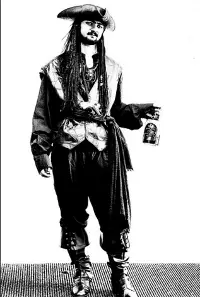 It was all very rousing stuff, and showed off the skills of many of the orchestra very well.
It was all very rousing stuff, and showed off the skills of many of the orchestra very well.
How do you follow Rule Britannia? With Pirates of the Caribbean, of course. This is a collaboration between Hans Zimmer and Klaus Badelt, with the unmistakeable sound of Zimmer’s film scores. It was exciting stuff, mirroring the dizzy exploits and excitement of the film and pelting along at a terrific rate. The orchestra really enjoyed this as well, and gave it an extra swing, and terrific timing. It was marvellous.
At the very end, just like going to sleep after the shipping forecast on Radio 4, came a little extra treat. “Sailing By”, by Ronald Binge, is one of those classic English tunes, like “By the Sleepy Lagoon”, by Eric Coates, which introduces Desert Island Discs. It’s like a lullaby for adults, soft and gentle and lovely, and a perfect way to end the evening.
Next Season
I realised I haven’t mentioned all the individual soloists and their contributions. It’s just that there were so many of them, and they came from all areas of the orchestra, from the two harps to the snare drumming, the violas, the horns, there were just too many to list or name, and I don’t want to miss anyone out or give anyone the impression that I favoured any particular musicians. I’m in awe of all of them, and they gave me a great evening I shan’t forget for a long time. Thank you all.
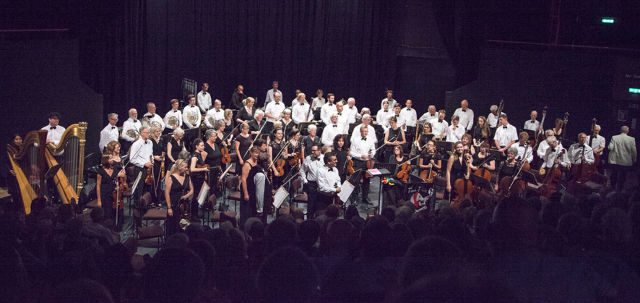
I’m looking forward to next season now. It’ll start on Saturday 18th November, with a lot of Russians. There’s Tchaikovsky’s Sixth Symphony, a Harp Concerto by Gliere, and more Khachaturian. Later on there’ll be Elgar’s Violin Concerto, a favourite of mine, Grieg’s Norwegian Dances, and a Walton Cello Concerto, among many others. The season will end with “Classics for the Silver Screen”. That’ll be wonderful.
You can guarantee your seats by buying season tickets. It’s well worth it, because the Medina is usually jam-packed. And, above all, the IWSO deserves all the support it can get, because they’re doing a terrific thing. And their concerts are really worth going to.
See you there. I can’t wait!
Image: © With kind permission of Allan Marsh

